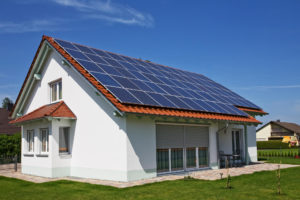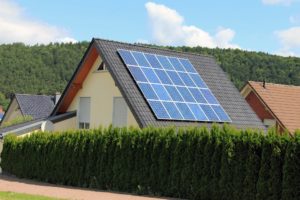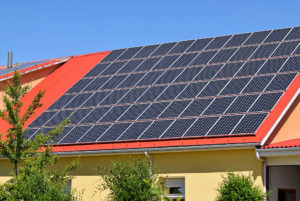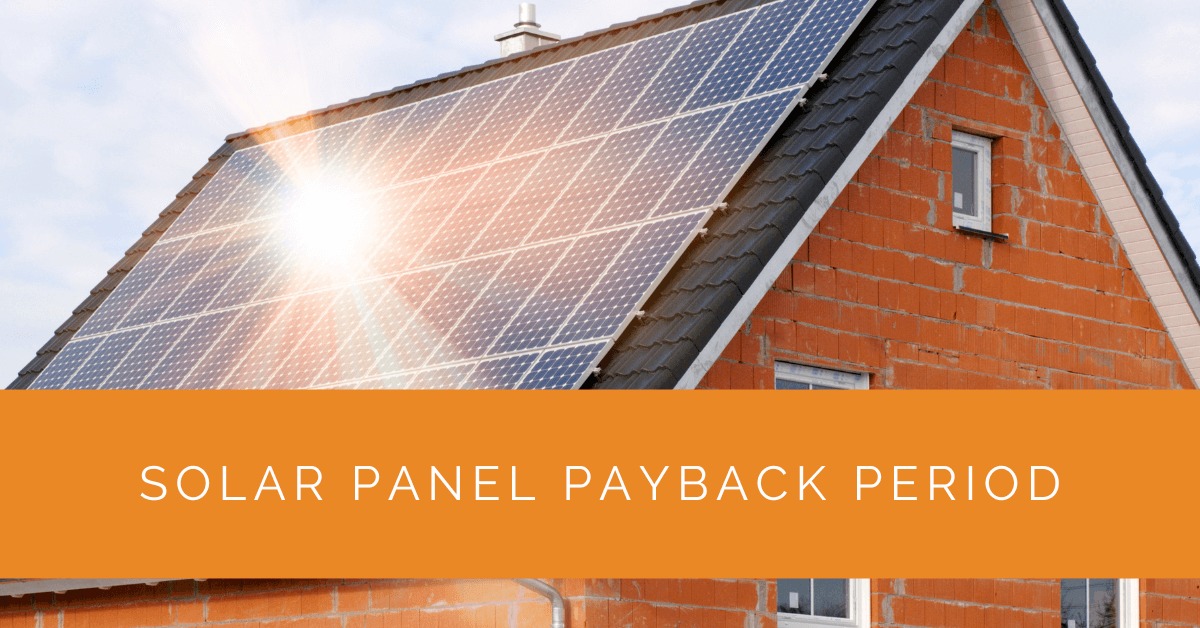As the popularity of solar panels continues to soar, understanding the solar panel payback period becomes essential. In this comprehensive guide, we will explore how to calculate the payback period for solar panels, considering factors such as energy production, system cost, incentives, and more. By understanding the payback period, you can make informed decisions about your solar panel investment and calculate your return on investment (ROI).
Contents
- 1 Key Takeaways
- 2 Understanding Solar Panel Payback Period
- 3 Calculating Solar Panel Payback Period
- 4 Factors Affecting Payback Period
- 5 Strategies to Reduce Solar Payback Period
- 6 Case Study: Optimizing Solar Panel Payback Period for a Residential Installation
- 7 Expert Insights From Our Solar Panel Installers About Solar Panel Payback Period
- 8 Experience Solar Excellence with Us!
- 9 Conclusion
- 10 FAQ
Key Takeaways
- Understanding the solar panel payback period is crucial for homeowners, as it helps evaluate the financial viability and return on investment of solar panel installations.
- Factors such as energy production, system cost, incentives, and financing options significantly influence the payback period, and homeowners can optimize it by maximizing energy efficiency, exploring favorable financing and incentive options, and ensuring proper maintenance and system performance.
- Reducing the payback period enhances the financial benefits of going solar, offering long-term cost savings, additional revenue streams, and contributing to a more sustainable future.
Understanding Solar Panel Payback Period
When it comes to understanding the solar panel payback period, delving deeper into the concept and its implications can provide valuable insights for homeowners considering solar panel installations. By exploring the intricacies of the payback period, including its definition, calculation, and significance, individuals can make well-informed decisions about their solar investments.
What is Solar Panel Payback Period?
The solar panel payback period represents the duration it takes to recover the initial investment in a solar panel system through the savings generated by reduced energy bills. It is a crucial metric for homeowners to evaluate the financial viability and potential return on investment (ROI) of going solar.
Factors Influencing Payback Period
A myriad of factors influences the payback period of solar panels. Understanding these factors empowers homeowners to assess the feasibility and profitability of their solar investments effectively. Considerations include:
Energy Production and Savings
The amount of energy a solar panel system produces, and the resulting savings play a pivotal role in determining the payback period. Factors such as the size of the system, solar panel efficiency, and local solar resource availability impact the energy generation potential. Accurate estimating of the expected energy production and the associated cost savings helps homeowners evaluate the payback period more precisely.
System Cost and Financing
The upfront cost of installing a solar panel system significantly affects the payback period. Factors to consider include equipment, installation costs, permits, and other expenses. Additionally, the financing method employed, such as cash purchase or solar loans, influences the initial investment and the subsequent monthly payments. Exploring various financing options allows homeowners to select the most suitable approach that aligns with their financial goals and helps optimize the payback period.
Solar Incentives and Tax Credits
Government incentives, such as federal and state solar tax credits, rebates, and solar renewable energy certificates (SRECs), reduce the overall system cost and payback period. Researching and understanding the available incentives specific to one’s geographical area is crucial for maximizing the financial benefits and expediting the return on investment.

Calculating Solar Panel Payback Period
Accurately calculating the solar panel payback period involves comprehensively evaluating various factors. By following a systematic approach, homeowners can better understand the time it will take to recover their initial investment through energy savings.
Assessing Upfront Costs
Assessing the upfront costs of installing a solar panel system forms the foundation of the payback period calculation. It entails a detailed evaluation of the total system cost, including the purchase or lease of solar panels, equipment, installation expenses, permits, and any additional costs associated with the project. A precise estimation of the initial investment facilitates a more accurate calculation of the payback period.
Estimating Energy Production and Savings
To calculate the payback period, estimating the solar panel system’s energy production and savings potential is crucial. Considerations include the system size, orientation, tilt angle, solar irradiance in the region, shading, and other environmental factors. An estimation of the annual energy savings can be determined by assessing these variables and comparing them to the homeowner’s current electricity consumption and prevailing electricity rates. This estimation forms a vital component in the payback period calculation.
Considering Incentives and Financing Options
Homeowners should thoroughly research and understand the available solar incentives, tax credits, and financing options. These can significantly impact the payback period. Government incentives, including federal and state tax credits, rebates, and SRECs, can help reduce the initial investment and shorten the time it takes to recoup it. Additionally, exploring various financing options, such as solar loans with competitive interest rates, can influence the payback period by providing affordable payment options.
Performing Payback Period Calculation
A formulaic approach can be adopted to calculate the payback period of a solar panel system. Homeowners can obtain a more accurate projection of the payback period by incorporating the assessed upfront costs, estimated energy production and savings, and the impact of incentives and financing options.
The payback period formula is as follows:
Payback Period = Net Cost of Solar System / Annual Energy Savings
The net cost of the solar system is determined by subtracting any applicable incentives, tax credits, or rebates from the total system cost. This adjusted cost represents the investment homeowners need to recover through energy savings. The annual energy savings are calculated by multiplying the estimated energy production of the solar panel system by the prevailing electricity rate or the homeowner’s current electricity cost.
By plugging the values into the formula, homeowners can obtain a numerical value representing the payback period in years. This figure provides valuable insights into the time it will take to recoup the initial investment and begin enjoying the financial benefits of solar energy.
Example Scenario: Residential Solar Panel Payback Period Calculation
To illustrate the payback period calculation, let’s consider a hypothetical scenario. Suppose a homeowner installs a solar panel system with a net cost of $25,000 after factoring in available incentives. Based on the system’s estimated annual energy savings of $2,800, we can calculate the payback period as follows:
Payback Period = $25,000 / $2,800 = 8.93 years
In this example, the payback period is approximately 8.93 years, indicating that it will take close to 9 years to recover the initial investment through energy bill savings. This calculation serves as a useful benchmark for homeowners to evaluate the financial viability of their solar panel investment.

Factors Affecting Payback Period
Several factors contribute to the variation in payback periods for solar panel systems. Understanding these factors helps homeowners assess the feasibility of their solar investments and identify strategies to optimize the payback period.
Geographic Location and Solar Potential
The geographic location is crucial in determining the solar potential and, consequently, the payback period. Regions with ample sunlight and high solar irradiance tend to yield more energy, resulting in shorter payback periods. Factors such as latitude, climate, and shading should be considered when assessing the solar potential and estimating energy production.
Energy Consumption and Usage Patterns
A household’s energy consumption and usage patterns significantly influence the payback period. Homes with higher electricity consumption have greater potential for energy bill savings, leading to shorter payback periods. Assessing the household’s energy needs, identifying energy-saving opportunities, and adopting energy-efficient practices can help optimize the payback period.
System Size and Efficiency
The size and efficiency of the solar panel system directly impact the payback period. Larger systems with higher wattage have the potential to generate more electricity, resulting in accelerated energy bill savings. Investing in efficient solar panels also ensures optimal energy production and higher savings, contributing to a shorter payback period.
Financing and Incentives
The financing method chosen and the availability of solar incentives play crucial roles in determining the payback period. Opting for favorable financing options, such as low-interest solar loans, can reduce the monthly payments and expedite the payback period. Moreover, taking advantage of government incentives, such as federal solar tax credits and state-level rebates, significantly shortens the time it takes to recoup the initial investment.

Strategies to Reduce Solar Payback Period
Homeowners have various strategies to shorten the payback period and optimize the financial benefits of their solar panel investment.
Maximizing Energy Efficiency
Implementing energy-efficient practices within the home can reduce overall energy consumption, leading to greater energy bill savings. Upgrading to energy-efficient appliances, improving insulation, and adopting energy-saving habits can lower electricity usage and, subsequently, a shorter payback period. By maximizing energy efficiency, homeowners can enhance the financial returns of their solar panel system.
Exploring Financing and Incentive Options
Researching and exploring different financing options is essential for optimizing the payback period. Homeowners can compare and select financing options with favorable terms and interest rates, allowing for affordable monthly payments and a quicker return on investment. Additionally, staying informed about available solar incentives, tax credits, and rebates enables homeowners to take full advantage of financial benefits and shorten the payback period.
Evaluating Maintenance and Performance
Regular solar panel system maintenance and monitoring are crucial for optimal performance and energy production. Keeping the panels clean, checking for potential issues, and promptly addressing them contribute to maximizing energy generation and savings. By maintaining the efficiency and performance of the system, homeowners can expedite the payback period and enjoy greater financial benefits over the system’s lifetime.
Exploring Additional Revenue Streams
In some cases, homeowners may be able to generate additional revenue through mechanisms such as solar renewable energy certificates (SRECs) or net metering. SRECs allow homeowners to earn credits or payments for the renewable energy their solar panel system generates. Net metering programs enable homeowners to feed excess energy into the grid in exchange for credits or compensation. By leveraging these additional revenue streams, homeowners can further shorten the payback period and enhance the overall financial returns of their solar investment.
Case Study: Optimizing Solar Panel Payback Period for a Residential Installation
Background
At Solar Panels Network USA, we are dedicated to helping homeowners make the most out of their solar investments. This case study showcases our approach to optimizing the payback period for a residential solar panel installation, highlighting the strategies and results achieved through our comprehensive assessment and tailored solutions.
Project Overview
Our client, a homeowner with a growing family, sought to reduce their energy bills and contribute to a sustainable future by installing solar panels. The primary goal was to achieve a short payback period and maximize the return on investment (ROI). The homeowner approached us for a detailed assessment and expert guidance to ensure an efficient and cost-effective solar panel system.
Initial Consultation and Assessment
Energy Consumption Analysis
We began by analyzing the client’s current energy consumption patterns. This involved reviewing past utility bills, understanding seasonal variations in energy use, and identifying high-consumption appliances. This data provided a clear picture of the household’s energy needs and potential savings from a solar panel system.
Site Survey and System Design
A comprehensive site survey was conducted to assess the roof’s suitability for solar panels. We considered factors such as roof orientation, tilt angle, shading from nearby trees or structures, and available roof space. Using advanced design software, we created a customized solar panel system tailored to the home’s specific conditions, ensuring optimal energy production.
Implementation
Selecting the Right System
Based on the assessment, we recommended a high-efficiency solar panel system with a capacity of 8 kW. The system included monocrystalline panels known for their superior efficiency and durability. Additionally, we opted for a grid-tied setup to allow excess energy to be fed back into the grid, leveraging net metering benefits.
Incorporating Incentives and Financing
We guided the homeowner through available solar incentives and financing options. This included federal and state tax credits, local utility rebates, and exploring solar loan options with competitive interest rates. By taking advantage of these incentives, we significantly reduced the upfront cost of the solar installation.
Results
Reduced Payback Period
Through careful planning and leveraging incentives, we achieved a payback period of approximately 6 years for the homeowner. This was a considerable improvement compared to the initial projection, primarily due to the optimized system design and financial strategies implemented.
Energy Savings and ROI
Post-installation, the homeowner experienced a substantial reduction in their monthly energy bills. The solar panel system generated enough electricity to cover the majority of the household’s energy needs, resulting in annual savings of around $2,500. This led to an impressive ROI, with the system expected to yield significant financial returns over its 25-year lifespan.
Environmental Impact
Beyond financial benefits, the homeowner was delighted with the environmental impact of their decision. The solar panel system reduced the household’s carbon footprint by approximately 7 metric tons of CO2 annually, contributing to a greener and more sustainable future.
Summary
Our expertise in solar energy solutions and commitment to customer satisfaction enabled us to help the homeowner achieve an optimized payback period for their solar panel installation. By conducting a thorough energy assessment, leveraging available incentives, and designing an efficient solar system, we ensured that the client enjoyed both financial and environmental benefits. This case study underscores the importance of detailed planning, expert guidance, and strategic implementation in maximizing the value of a solar investment.
Expert Insights From Our Solar Panel Installers About Solar Panel Payback Period
Understanding your payback period is crucial. It helps you see how soon your investment in solar will start paying off. Factors like local incentives and your energy consumption patterns can significantly impact this period.
Solar Installation Manager
Accurate calculation of the payback period involves not just the upfront costs but also the expected energy savings and available tax credits. It’s essential to consider all these factors to get a realistic timeline.
Senior Solar Energy Consultant
Choosing the right financing option can drastically reduce your payback period. Whether it’s a solar loan or lease, understanding the terms and potential savings is key to making an informed decision.
Renewable Energy Specialist
Experience Solar Excellence with Us!
Trust in Solar Panels Network USA, where our seasoned experts deliver top-quality solar solutions for homes and businesses nationwide. With a legacy of countless successful installations and a commitment to sustainable energy, we’re your reliable partner in the solar journey. Ready for a brighter, eco-friendly future? Call us now at (855) 427-0058 and harness the power of the sun!
Conclusion
Understanding the solar panel payback period is crucial for evaluating the financial benefits of going solar. Considering energy production, system cost, incentives, and financing options, you can calculate the payback period and make informed decisions about your solar investment. Reducing the payback period through strategies like energy efficiency and exploring financing options can enhance the return on investment and expedite the time it takes to recover your initial investment.
Going solar allows you to contribute to a cleaner environment and offers long-term financial advantages. Calculate your solar payback period, assess your energy goals, and consult with solar professionals to embark on a renewable energy journey that brings both environmental and financial rewards.
FAQ
What is a good payback period for solar panels?
A good payback period for solar panels typically ranges between 5 to 10 years. However, the ideal payback period may vary based on location, system size, energy consumption, and available incentives.
What is the average ROI for solar panels?
The average return on investment (ROI) for solar panels is around 10-20%, depending on various factors such as system cost, energy savings, and available incentives. The ROI can be even higher in areas with high electricity rates and generous solar incentives.
How do you calculate ROI on solar panels?
To calculate the ROI on solar panels, divide the total lifetime savings (including energy bill savings and incentives) by the initial investment cost of the system. Multiply the result by 100 to express it as a percentage. The formula is ROI = (Lifetime Savings / Initial Investment Cost) x 100.
What factors affect the payback period and ROI of solar panels?
Several factors influence solar panels’ payback period and ROI, including system cost, energy production, location, available incentives, financing options, and energy consumption patterns. Understanding these factors helps homeowners make informed decisions about their solar investments.
About the Author
Solar Panels Network USA stands at the forefront of solar energy solutions, driven by a team of seasoned solar engineers and energy consultants. With over decades of experience in delivering high-quality solar installations and maintenance, we are committed to promoting sustainable energy through customer-centric, tailored solutions. Our articles reflect this commitment, crafted collaboratively by experts to provide accurate, up-to-date insights into solar technology, ensuring our readers are well-informed and empowered in their solar energy decisions.

